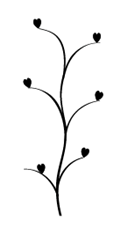 Bringing the unconscious to the conscious is in many ways a process of long-term self-engagement. For this there is no quick fix, nor a right or wrong way. Just your way.
Bringing the unconscious to the conscious is in many ways a process of long-term self-engagement. For this there is no quick fix, nor a right or wrong way. Just your way.
Unique and self-developing. The process does move forward most easily when nurtured with gentleness, ownership, and self-honesty.
What is this process of taking responsibility and turning awareness into action about?
When you become aware of something, you can no longer pretend not to know. This carries a responsibility that removes the non-commitment. You then have to take responsibility for what you have become aware of, for better and for worse. Including the not so pleasant things. Whether you like it or not.
 It requires a lot of practice and self-knowledge to view this process and become truly non-judgmental toward yourself. This develops as you go, through trial and error. It is all about continuous learning and growth by reflecting on concrete facts/events/behavior and your reactions. It is also about learning to objectively observe your feelings and thoughts. Through this you practice remaining unaffected. You observe, you receive, and you let go.
It requires a lot of practice and self-knowledge to view this process and become truly non-judgmental toward yourself. This develops as you go, through trial and error. It is all about continuous learning and growth by reflecting on concrete facts/events/behavior and your reactions. It is also about learning to objectively observe your feelings and thoughts. Through this you practice remaining unaffected. You observe, you receive, and you let go.
This develops gradually, through trial and error. It’s all about continuous learning and growth by reflecting on concrete facts/events/behaviors and your reactions.
As such, the consciousness evolves from a spiral of dynamics between core qualities, pitfalls, challenges, and allergies/triggers/resistance. Through which you learn to be neutrally present and react inclusively. This learning cycle goes beyond analyzing cause and effect and includes analyzing context as well as observing your own thought patterns, emotions, and paradigms, too.
 You pass on what you believe in
You pass on what you believe in
The learning process also brings to light deep individual convictions.
 These are narratives you tell yourself and believe in, stored in your system. They are about deep-rooted beliefs concerning all sorts of fundamental areas of life. That you consider as ‘normal’ and through which you view the world, others, and yourself, and act.
These are narratives you tell yourself and believe in, stored in your system. They are about deep-rooted beliefs concerning all sorts of fundamental areas of life. That you consider as ‘normal’ and through which you view the world, others, and yourself, and act.
The only way to change these convictions is to have the heart to address them and transform them. If you choose to do so, however, you expand your field of vision and create a different reality (paradigm shift).
You foster the growth process by identifying and taking a good look at your current personal deep convictions from time to time. This regular review supports the maturation of your consciousness and awareness. It challenges your current thinking and behavior patterns.
- To this end, you identify and evaluate your beliefs reflectively.
- Then for each one, you ask yourself, “Is this belief still working for me or rather against me? Does it bring more happiness, love, space, ease, energy, creativity, purpose, and so on into my life?”
- If you feel that some have become less beneficial or even destructive, ask yourself “What new beliefs could work for me and my life? Can I replace the old beliefs with the new ones?”.

- Repeat the evaluation some time later.
It takes inner mindfulness to bring deep-rooted beliefs to the surface. And, to face them open-mindedly, open-heartedly (mildly), and frankly. Moreover, it requires alertness not to fall back into old patterns. To put your finger on what is actually stopping you from making the change and admit this to yourself. And then, to apply the new set of beliefs and make them your own.
The newness arises from practicing the new way of perceiving, feeling, and thinking in order to eventually arrive at a new way of (re)acting and behaving. During this process, however, try not to lose sight of what goes well and be gentle to yourself.
![]() You bring your awareness into action, by embracing what you have become aware of and incorporate the awareness into your behavior. Then you actually make change through actions that set an example. That will uplift, inspire, encourage, and even empower others to do the same.
You bring your awareness into action, by embracing what you have become aware of and incorporate the awareness into your behavior. Then you actually make change through actions that set an example. That will uplift, inspire, encourage, and even empower others to do the same.
The world is in need of such actions, feel encouraged to step up.
Read More


